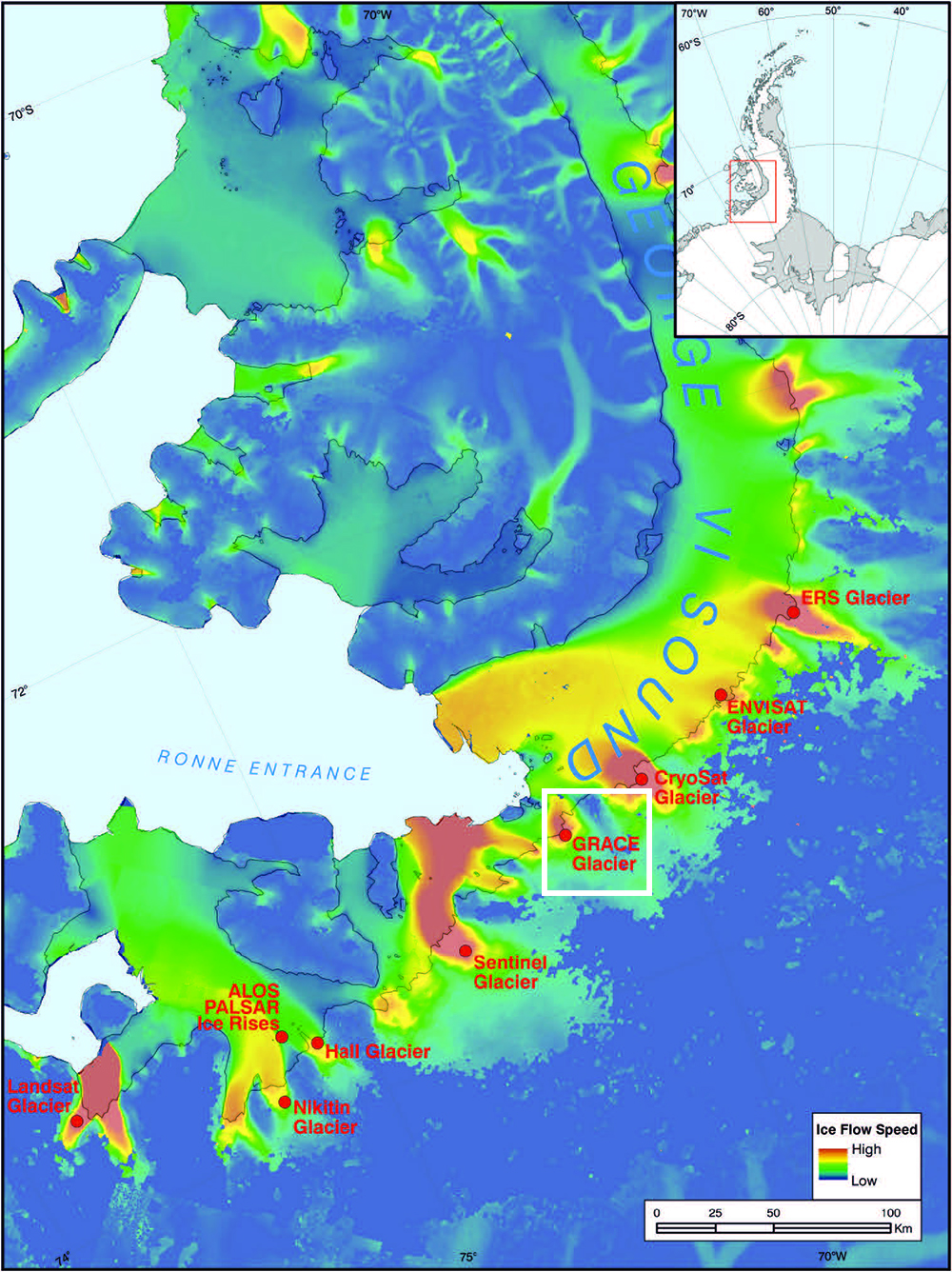A remote glacier on the western side of the Antarctic Peninsula has been named after GRACE, the satellite mission developed by Cockrell School of Engineering researchers at The University of Texas at Austin almost two decades ago. This is in recognition of the contributions made from the data collected by the Earth observation twin satellite system — data that has helped engineers and scientists understand climate patterns in one of the most remote places on Earth.
GRACE (the Gravity Recovery and Climate Experiment) is one of seven satellites being recognized by the U.K. Antarctic Place-names Committee. The spacecraft being honored were developed in Europe, the United States and Japan and together have been able to deliver a data-driven picture of the accelerating ice loss in the region caused by climate change.
All seven glaciers, previously known only by their coordinates on a map, run parallel to each other in a region known as Western Palmer Land, next to George VI Ice Shelf on the Antarctic Peninsula.
The Grace Ice Stream (previously known as 73° 24′ 00″ S, 71° 18′ 00″ W) flows west into George VI Ice Shelf, 20 kilometers south east of Eklund Islands. The stream follows a naming theme in Western Palmer Land for Earth observation satellites and their sensors that have collected important data for understanding the Antarctic Ice Sheet. A NASA and German Aerospace Centre joint mission, GRACE was designed to map variations and changes in Earth's gravity field from which changes in mass of the Antarctic Ice Sheet can be derived. The satellite system was launched in 2002 and operated until late 2017, after which a new twin satellite system, the GRACE Follow-On, was launched to continue the work.
“It is fitting that the ice streams with these names appear side by side, since students and staff at UT’s Center for Space Research have worked through the decades with four of the seven space missions,” said Srinivas Bettadpur, director of the center, associate professor in the Department of Aerospace Engineering and Engineering Mechanics and one of the principal researchers behind the GRACE mission.
Bettadpur said that GRACE, a project initiated by a group of UT engineers and scientists led by Byron Tapley in collaboration with NASA and the German Aerospace Centre in 2002, has been a tremendous success in its own right. But he also stresses that GRACE’s achievements could only have been made possible by the collective use of all seven satellite teams being honored. Each group has shared their data and expertise with engineers and scientists worldwide throughout the projects.
Anna Hogg, a glacial scientist at Leeds University, proposed the satellite names idea to the place-names committee.
"Satellites are the heroes in my science of glaciology,” Hogg said in an interview with the BBC. “They've totally revolutionized our understanding of the Antarctic, and so I thought it would be brilliant to commemorate them in this way."
For information on the other six satellites after which the glaciers are named, read the BBC News story: Antarctic Glaciers to Honour ‘Satellite Heroes’








